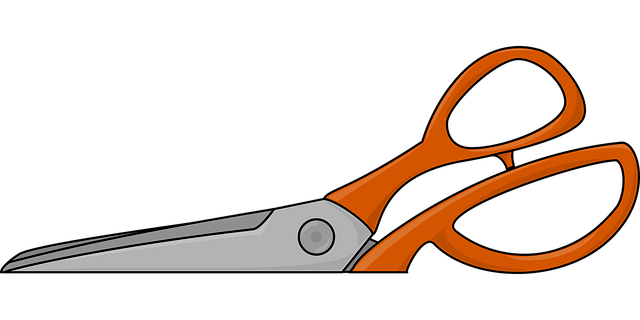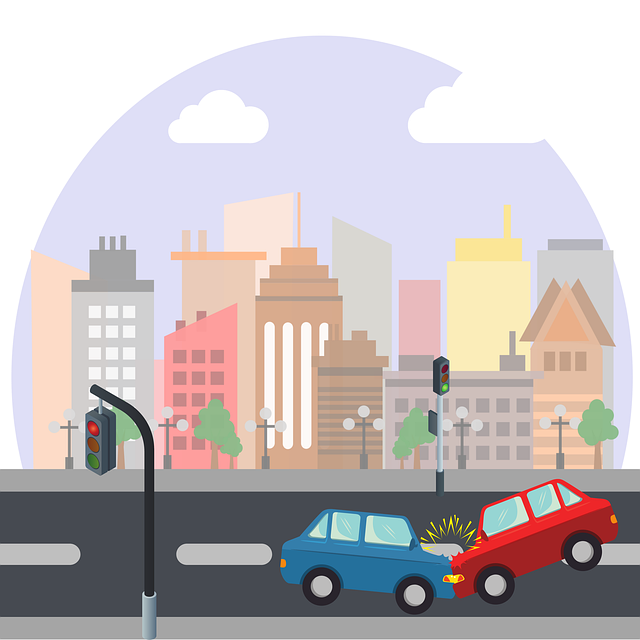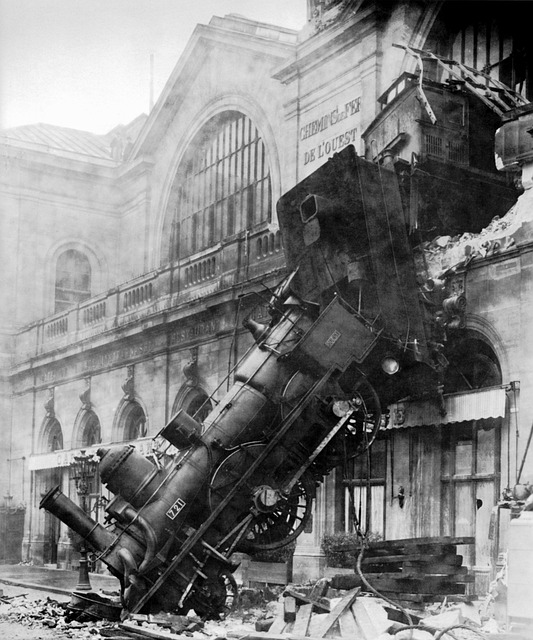Mastering Post-Accident Frame Analysis: Essential Techniques for Drivers
Post-accident frame analysis is a critical process using advanced tools like CAD software and 3D sca…….
In the wake of accidents, whether industrial, transportation, or environmental, organizations and governments are increasingly turning to a powerful analytical tool known as “Post-Accident Frame Analysis” (PAFA). This methodical approach goes beyond immediate response and recovery, delving deep into the causes, context, and potential far-reaching implications of an accident. PAFA is not just about understanding what happened; it’s about learning from incidents to prevent future reoccurrences, enhance safety standards, and optimize resource allocation. This article aims to be a comprehensive guide, taking readers on a journey through the intricacies of PAFA, its global impact, and its multifaceted implications. By the end, readers will grasp why this analytical process is not just relevant but critical in today’s complex world.
Definition: Post-Accident Frame Analysis (PAFA) is a systematic investigation conducted after a significant incident to examine its causes, consequences, and potential improvements. It involves a multi-disciplinary approach, drawing expertise from various fields such as engineering, safety science, law, and psychology.
Core Components:
Incident Reconstitution: Recreating the accident sequence to understand the timeline and sequence of events. This step often involves interviews with witnesses, analysis of data logs, and physical evidence examination.
Root Cause Analysis: Identifying the fundamental factors that led to the accident, moving beyond immediate causes to underlying cultural, organizational, or systemic issues. Techniques like the 5 Whys method are commonly employed here.
Consequences Assessment: Evaluating the impact of the incident, including financial losses, environmental damage, and human injuries or fatalities. This phase also involves analyzing indirect consequences, such as reputational harm and regulatory fines.
Recommendations and Action Planning: Based on findings from steps one to three, developing actionable items to prevent similar accidents. This includes implementing new safety protocols, technological solutions, or policy reforms.
Historical Context: The concept of PAFA gained prominence in the late 20th century as industrial disasters like the Bhopal gas leak (1984) and Chernobyl nuclear accident (1986) underscored the need for comprehensive post-incident reviews. Over time, it has evolved from a reactive process to a proactive one, with organizations proactively adopting PAFA to enhance their safety cultures and resilience.
PAFA is a global practice, yet its implementation varies across regions due to cultural, regulatory, and economic differences. Here’s a glimpse into its international influence:
| Region | Trends and Observations |
|---|---|
| North America | Leading in aviation safety, the US and Canada employ stringent PAFA protocols for aerospace and transport incidents. The focus is on data-driven analysis and integrating advanced technologies. |
| Europe | Known for robust environmental PAFA practices, especially after disasters like the Deepwater Horizon oil spill (2010). Stricter regulations and proactive risk assessment are hallmarks. |
| Asia Pacific | Rapid industrialization drives complex challenges in PAFA implementation. Countries like Japan and South Korea excel in post-incident lessons learned, integrating them into their safety frameworks. |
| Middle East | Oil and gas industry incidents shape PAFA dynamics, with a focus on high-risk sector safety. The region’s regulatory bodies are enhancing digital capabilities for more efficient analysis. |
| Latin America | Diverse cultural contexts present unique challenges. Brazil and Mexico are making strides in standardizing PAFA methods while addressing local disparities. |
The economic aspects of PAFA are significant, as incidents can have substantial financial implications:
Market Dynamics: Major accidents often disrupt industries temporarily, leading to fluctuations in supply chains and market prices. For instance, the 2010 Gulf of Mexico oil spill affected global energy markets.
Investment Patterns: PAFA findings influence investment decisions. Companies may reallocate resources to safety infrastructure or opt for more technologically advanced solutions after understanding post-incident risks.
Cost Savings vs. Prevention: While PAFA incurs costs, the long-term savings from preventing accidents and reducing insurance premiums make it a financially prudent strategy. A study by Deloitte (2018) estimated that companies with robust safety cultures save 5-7% of their annual revenue through risk mitigation.
Technology plays a pivotal role in modern PAFA, enhancing its efficiency and depth:
Data Analytics: Advanced data analytics tools enable complex incident reconstruction and pattern recognition. Machine learning algorithms can predict potential hazards by analyzing historical data.
Digital Twin Technology: Creating digital replicas of physical systems allows for detailed simulations, helping to identify vulnerabilities before actual implementation. This technology is especially valuable in construction and manufacturing sectors.
Internet of Things (IoT): IoT sensors provide real-time data on equipment health, environmental conditions, and worker safety, allowing for proactive risk management.
Augmented Reality (AR) and Virtual Reality (VR): These immersive technologies aid training and incident reconstruction, making complex scenarios more accessible to understand and communicate.
Governments play a crucial role in PAFA through policies and regulations that guide its implementation:
Safety Standards: Many countries have established regulatory bodies tasked with developing and enforcing safety standards post-incident analysis. For example, the US National Transportation Safety Board (NTSB) sets guidelines for aviation and transport accidents.
Liability Laws: Legal frameworks influence how PAFA is conducted and who bears responsibility for incidents. Strict liability laws in some jurisdictions encourage organizations to implement robust PAFA practices.
International Cooperation: Organizations like the International Maritime Organization (IMO) and International Civil Aviation Organization (ICAO) collaborate on global safety standards, ensuring consistent PAFA approaches across borders.
Despite its benefits, PAFA faces challenges that require attention:
Resistance to Change: Implementing PAFA in deeply rooted cultural contexts can be met with resistance from employees and organizations wary of perceived criticism or increased regulation.
Data Accessibility: Ensuring all relevant data is readily available and accessible for analysis is challenging, especially in diverse organizational structures. Data silos can hinder comprehensive investigations.
Subjectivity Bias: Human involvement in PAFA may introduce subjective interpretations, leading to biased findings. Standardizing methodologies and training can mitigate this risk.
Proposed Solutions: To overcome these challenges:
This catastrophic incident in the Gulf of Mexico led to an extensive PAFA, revealing systemic failures and human errors. The findings resulted in significant regulatory changes, including stricter well control requirements and enhanced safety protocols for offshore drilling. The case study underscored the importance of integrating lessons learned into industry-wide practices.
A PAFA conducted after this high-profile train collision in Tokyo revealed signal system failures and operator fatigue as contributing factors. The analysis led to improvements in Japan’s rail safety systems, including advanced signaling technologies and enhanced driver training programs.
PAFA for this failed landing of a SpaceX capsule revealed technical issues with the rocket’s engine control software. The investigation resulted in software updates and design modifications, showcasing how PAFA can drive rapid technological improvements in high-risk industries.
The future of PAFA is promising, shaped by emerging technologies and evolving global dynamics:
Artificial Intelligence (AI): AI has the potential to revolutionize PAFA by automating data analysis, identifying patterns, and providing actionable insights faster. Natural Language Processing (NLP) can extract valuable information from textual data.
Digital Twin Evolution: As digital twins become more sophisticated, they will play a central role in simulating complex systems and scenarios, enabling organizations to test PAFA recommendations before implementation.
Global Harmonization: Efforts to standardize PAFA methodologies globally will gain momentum, ensuring consistent approaches across industries and borders. This standardization will enhance the comparability of findings and facilitate knowledge sharing.
Post-Accident Frame Analysis is more than just an exercise in hindsight; it’s a strategic tool for proactive safety management. Its global impact and continuous evolution demonstrate its relevance across industries and regions. As we move forward, PAFA will play a pivotal role in shaping a safer, more resilient world, guided by data, technology, and a commitment to learning from incidents. By embracing PAFA, organizations and governments can not only prevent tragedies but also foster a culture of continuous improvement.
Q: How does PAFA differ from traditional post-incident reports?
A: While traditional reports often focus on immediate facts, PAFA goes deeper, exploring root causes, cultural factors, and potential systemic issues. It’s not just about documenting what happened but also why and how to prevent recurrence.
Q: Is PAFA only relevant for large-scale disasters?
A: No, PAFA is applicable across industries and incident sizes. Even minor accidents can provide valuable insights for improvement, making it a critical process for organizations of all scales.
Q: How does technology enhance the accuracy of PAFA?
A: Technology improves PAFA through data analytics, digital simulations, IoT real-time monitoring, and immersive training tools. These advancements enable more efficient, comprehensive, and accurate analyses.
Q: What role do regulatory bodies play in PAFA?
A: Regulatory bodies establish safety standards, enforce regulations, and often conduct or oversee PAFA for significant incidents. They ensure that organizations comply with post-incident analysis requirements and learn from industry lessons.
Q: Can PAFA help prevent future accidents?
A: Absolutely. By identifying vulnerabilities, cultural issues, and systemic gaps, PAFA provides actionable recommendations to enhance safety measures. Proactive implementation of these recommendations can significantly reduce accident risks.

Post-accident frame analysis is a critical process using advanced tools like CAD software and 3D sca…….

Post-accident frame analysis is a crucial yet misunderstood process that goes beyond surface damage…….

Post-accident frame analysis leverages 3D scanning and CAD to thoroughly assess vehicle damage beyon…….

Post-accident frame analysis is a detailed, technology-driven process using 3D scanning and CAD to c…….

Post-accident frame analysis is a sophisticated process using CAD software and specialized equipment…….

Post-accident frame analysis is a critical legal tool that goes beyond visual assessment to uncover…….

Post-accident frame analysis is a meticulous process using advanced tech and expertise to assess veh…….

Post-accident frame analysis involves a detailed scientific examination using advanced tools to unde…….

Post-accident frame analysis is a detailed assessment going beyond initial collision evaluation, unc…….

Post-accident frame analysis is a crucial process for insurance companies, enabling detailed examina…….